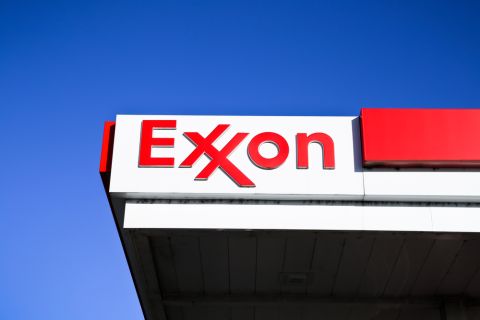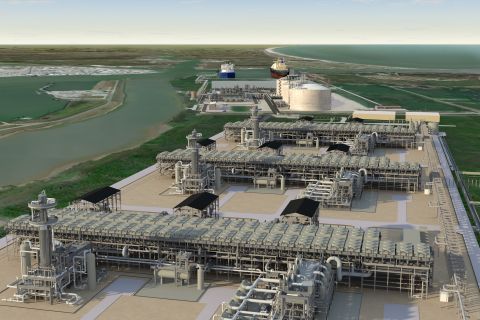Acquisitions are, for most upstream companies, an important driver for growth, alongside exploration. Although acquisitions have delivered a step-change in growth, even for some of the biggest players in the upstream industry, it has, to date, been less clear whether these deals have created value for the purchasers. To analyze the question of value creation through acquisitions Wood Mackenzie Ltd. looked at nearly 170 international deals, excluding the North American Lower 48 states, western Canada and the Gulf of Mexico shelf, for 25 companies between 1996 and 2002. These deals include mergers, acquisitions, swaps and the purchase of reserves in redevelopment projects. The concept of "value creation through acquisitions" was to compare the current value of the assets in a deal with the purchase price-in net present value (NPV) terms-to see whether value had been created or eroded. The 25 companies in the study group spent more than $140 billion nominal on their international acquisition strategies during the study period, or equivalent to around $180 billion in NPV. This has resulted in a total value creation through acquisitions of $23 billion (NPV-10% as of January 1, 2003) net of the acquisition expenditure. Among the 25 companies, 16 created value through acquisitions during the study period on the study's base-case assumptions. Nine companies, however, acquired assets now worth less than the cost of their acquisition spending in NPV terms. In absolute terms, the companies with the biggest acquisition spending, such as BP, Total and ExxonMobil, have seen the largest value creation, much of it from the mega-mergers that the industry has seen in recent years. Occidental is the top performer from the integrated and E&P company peer group, with BG, Talisman and Marathon also performing well. Given that acquisition expenditure is discretionary, albeit often in a competitive marketplace, companies should be able to make acquisitions that exceed their cost of capital (at worst) or meet their targets for the return on capital employed (preferably). Marathon and Talisman have managed to achieve a rate of return of nearly 20% on their purchases. Another four companies have made a return of around 14% nominal or better. These are excellent performances and will allow these companies to maintain a strong return on their capital employed. Nine companies have not achieved a 10% rate of return on their acquisition expenditure. Most of these companies probably are, however, at least exceeding their cost of capital and internally they may perceive value creation through their acquisitions where we show value erosion on a more demanding 10% nominal discount rate hurdle. For each company, we analyzed each of its deals and assessed what the key drivers of value creation-or value erosion-have been. Deal premium The deal premium paid to acquire assets (the difference between our valuation of the assets at the time of the deal and the purchase price) accounts for $9 billion of value erosion (NPV-10 on 1-1-03) in aggregate. This is not surprising, as in a normal market transaction a purchaser will have to offer a vendor-or its shareholders-an economic incentive to sell an asset or the company. In addition, many of these deals are made in a competitive bidding environment with other potential purchasers. Corporate bids saw some of the biggest premiums paid, in part reflecting the competition, but for some the fear of failing to make the acquisition may have outweighed the risk of overpaying. Oil price The oil price has, in aggregate, accounted for around $25 billion of value creation (NPV-10 on 1-1-03), by far the most significant value-driver. The size of the mega-mergers, and particularly those done during the low oil prices of 1998-99, meant they benefited considerably from the subsequent rise in oil price strength of 2000-03. We estimate that ExxonMobil has seen nearly $6 billion of added value due to the scale of the merger with Mobil, the high percentage of oil reserves in Mobil's portfolio and the timing of the deal in 1999, just before the strong oil prices of 2000-03. It is difficult to know to what extent companies making acquisitions, particularly when oil prices were low, had a counter-cyclical strategy. For some, the ability to use relatively highly rated equity to acquire lower-rated target companies may have been a key factor in their deals, although this in part was driven by shareholder disillusionment with low oil prices at the time. For the brave, the benefits have been considerable, despite the risks. The acquirers no doubt factored in some recovery in the oil price, although it is unlikely that the deals were based on oil prices averaging more than $25 per barrel (Brent) as was seen during 2000-03. Exploration upside A further $4 billion of value creation (NPV-10 on 1-1-03) in aggregate has come from exploration upside. This is the value of commercial discoveries (net of exploration expenditure) made by the purchaser on acreage acquired. ExxonMobil does well on this measure, with a number of significant discoveries on Mobil's former acreage including the super-giant Kashagan find in Kazakhstan and Thunder Horse North in the deepwater Gulf of Mexico. Amerada Hess performs well in its peer group, with considerable exploration success in Equatorial Guinea following its acquisition of Triton Energy. Increasing reserves and cutting costs following an acquisition are an important part of value creation. This "self help" has in total added just over $2 billion of value creation (NPV-10 on 1-1-03). BP ranks first on this measure from advancing former Amoco discoveries for development such as Mad Dog and King in the deepwater Gulf. Total has also benefited from significant increases in reserves in assets formerly owned by Elf. And, Shell has created value through the commercialization of gas in Sakhalin II after increasing its equity in a swap with Marathon, which has also seen reserves increased in Foinaven following the swap for Sakhalin. Norsk Hydro has also seen considerable "self help" following the acquisition of Saga Petroleum and a portfolio of assets it already knew well. Volume versus value A company's response to the lack of production growth or reserves being added could be to increase the amount it spends on acquisitions. There are, however, limits on whether this is a viable strategy. A company may simply not be able to identify the acquisition targets worth pursuing, or have the cash flow to fund sizeable acquisitions. Even if suitable targets can be identified, acquisitions will often be done in competition with other potential purchasers. The ideal objective is, clearly, to be able to create value through acquisitions and add reserves. To analyze this we plotted the companies in their peer groups on their acquisition margins which, on a basis of dollars per barrels of oil equivalent (NPV-10 on 1-1-03) is the value creation through acquisitions divided by the volume of reserves acquired-in essence the NPV added by each BOE acquired. We also plotted the companies on their commercial reserves replacement ratios through acquisitions. We set the axes to cross at an acquisition margin of zero dollars per BOE and the commercial reserves replacement ratio through acquisitions of 100%. This defines a universe of four quadrants based on the results achieved by the companies: Hunters are in the ideal position, with value created and reserves being replaced; Gatherers are those companies with a high reserves-replacement ratio but at the expense of negative acquisition margins; Grazers are those companies creating value through acquisitions but not replacing reserves; and Foragers experience a combination of eroding value through acquisitions and a failure to replace reserves, leaving these companies very dependent on their exploration strategy. The 25 companies we assessed have employed a range of different acquisition strategies. Some see acquisitions as an integral part of the growth of their upstream business, whereas an exploration-led strategy is dominant for others. A number of companies have been aggressive bidders and, on occasion, have paid premium prices as a result. In some instances, companies have been able to leverage their skills to create value from "self help" and the exploration upside on their acquired portfolios-as well as benefiting from the recent strength in oil prices, particularly for those that were prepared to be counter-cyclical when others were more cautious. From these strategies, 12 companies (out of 25) have seen value creation through acquisitions and, at the same time, have replaced their production with acquisitions of commercial reserves. If exploration is an enigma, acquisitions are an amalgam: premiums are out and upsides are in. How to avoid paying for some and have strategies for capturing others is the key to value creation through acquisitions. David Black is director, energy consulting, for London-based research firm Wood Mackenzie Ltd.
Recommended Reading
Exxon’s Guyana Gas Project a “Win-Win,” Set for Hook-up by Year-end ‘24
2024-04-26 - Exxon Mobil Corp. CEO Darren Woods said the company’s gas-to-power project in Guyana as a “win-win proposition particularly for the people of Guyana” when completed and hooked-up by year-end 2024.
Segrist: The LNG Pause and a Big, Dumb Question
2024-04-25 - In trying to understand the White House’s decision to pause LNG export permits and wondering if it’s just a red herring, one big, dumb question must be asked.
Texas LNG Export Plant Signs Additional Offtake Deal With EQT
2024-04-23 - Glenfarne Group LLC's proposed Texas LNG export plant in Brownsville has signed an additional tolling agreement with EQT Corp. to provide natural gas liquefaction services of an additional 1.5 mtpa over 20 years.
US Refiners to Face Tighter Heavy Spreads this Summer TPH
2024-04-22 - Tudor, Pickering, Holt and Co. (TPH) expects fairly tight heavy crude discounts in the U.S. this summer and beyond owing to lower imports of Canadian, Mexican and Venezuelan crudes.
What's Affecting Oil Prices This Week? (April 22, 2024)
2024-04-22 - Stratas Advisors predict that despite geopolitical tensions, the oil supply will not be disrupted, even with the U.S. House of Representatives inserting sanctions on Iran’s oil exports.




